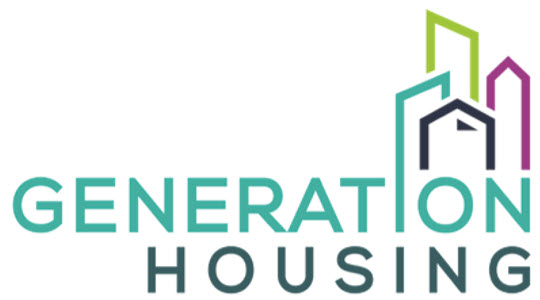Part of Generation Housing’s Youth Voices Series
Written by Rachel Lonto
COVID-19 has raised questions about density and overcrowding leaving many of us wondering what cities can do to help improve the public’s health and curb the spread of viruses in the context of housing. To better understand these questions, we must first understand the differences between density and overcrowding, which are often conflated. Density is the number of people in a given area or space, whereas overcrowding is the presence of more people in a space than is appropriate, safe, or allowable.
Density does not necessarily have a good or negative health impact, but overcrowding does. Most acutely, we often see this play out in places like prisons where many people live in close quarters with each other. For example, San Quentin has had almost two thousand incarcerated people infected with COVID-19; so far, a total of twenty-five have died. In Delaware’s Sussex Correctional Institution, nearly a third of the incarcerated people held have tested positive. Overcrowding is correlated to an increased rate of transmission for diseases and viruses like COVID-19. This is why COVID outbreaks are very common in prisons where overcrowding is a serious problem, and an example of overcrowding being strongly linked to the spread of COVID-19.
More dense cities and regions are more likely to also see overcrowding problems, especially in more expensive and costly cities, but one does not necessarily cause the other. Most cities with high density also have an overcrowding problem because there is often a high demand to live there but not enough housing. Overcrowding often correlates with there being a lack of affordable housing or not enough housing that is affordable at various income levels. If there is not enough housing, then more people have to cram into a space than what would be deemed safe or adequate. That’s an important reason for why many cities and towns need to build more housing. That way families can afford a home while helping improve public health.
It became clear early on during the pandemic that if cities did not act fast, or if people did not follow the rules, the spread of COVID-19 would worsen. But a proper response that acted quickly and swiftly could help improve outcomes. This is evident in the second-most densely populated city in the U.S.: San Francisco. San Francisco has been able to curb the virus due to its strict and early action to improve public health and safety measures. Conversely, we see evidence that in small towns where early action was not taken, there were huge outbreaks – despite low levels of density. For example, Albany, Georgia, and Blaine, Idaho, which are both small rural towns, have had major outbreaks, in part due to the lack of action. In fact, a recent research article published in the Journal of the American Planning Association found that “connectivity matters more than density” in relation to spreading COVID-19. It also found that high density counties had lower death rates due to infectious diseases like COVID-19 partially because larger metro areas also have stronger healthcare systems.
There are also many urban design features that cities can implement to help curb and prevent viruses from spreading. Urban design features can improve the public’s health as well as help build resilient communities against pandemics. Some of those strategies are air treatment systems and new public transit designs. For example, new air treatment filters have a huge potential to help curb viruses. A group of researchers at the University of Houston, have developed an air filter that can “capture and kill” the coronavirus. This can be a game-changer when it comes to putting them in high trafficked areas like subways and busses. Public transit is something that many people rely on. Even more importantly, ensuring good public transit will be crucial to help us reduce our dependence on cars, protect the environment. And we can get there if we locate homes near public transit that are also more walkable.
When it comes to apartments and multifamily housing, there are a few key things that can help prevent the spread of germs. The most important thing is building more housing so there is no need for overcrowding. Overcrowding is a result of our failure to build enough housing for all. Multifamily housing is most likely the future for housing since building out is often not possible nor good for the environment (i.e. sprawl). America’s youth is the future, and it is important for them as well as adults to understand how building more affordable housing and early safety measures can help us create a healthier future. By understanding these concepts, we can help create changes so future generations can be better prepared and more resilient in the face of another pandemic.

